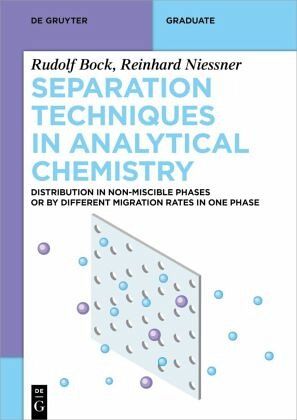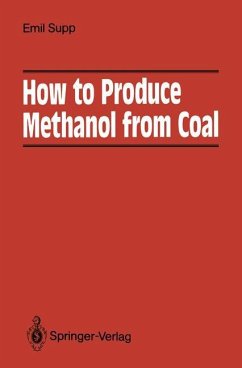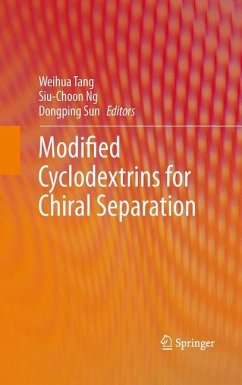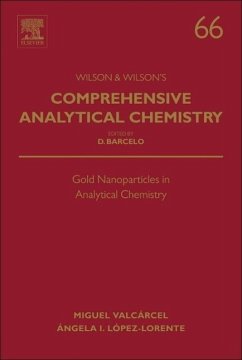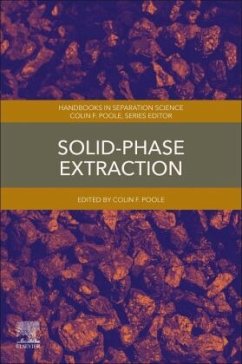and is structured in three parts. After the introduction in the first part, the second deals with separations due to different distribution between two immiscible phases, and Part III deals with separations due to different migration rates in one phase.
In the specific part of the textbook, separation processes are evaluated (Chapter 1) and classified (Chapter 2). Chemical reactions in separations (Chapter 3), analytical applications of incomplete separations (Chapter 4), and in overview of concentration data (Chapter 5) round out the introduction. Part II includes an extensive introduction (Chapter 6), partitioning between two liquids (e.g., partition chromatography, Chapter 7), solubility of gases in liquids (including a subchapter on gas chromatography, Chapter 8), adsorption and absorption of gases on solids (Chapter 9), adsorption of solutes on solids (e.g. e.g., thin-layer chromatography, Chapter 10), ion exchange (Chapter 11), precipitation methods (Chapter 12), extraction and phase analysis (Chapter 13), crystallization (Chapter 14), distillation (Chapter 15), sublimation (Chapter 16), and condensation (Chapter 17). In Part III, after a brief introduction (Chapter 18), mass spectrometry (Chapter 19), electrophoresis (Chapter 20), diffusion (Chapter 21), sedimentation (Chapter 22), and crossed force field separation of particles (Chapter 23) are described. Each chapter of separation techniques begins with the historical development, definitions as well as theory and ends with a list of literature used or further reading.
Critical review: The systematic classification of all described separation techniques according to distribution between two phases or separation by different migration velocities may seem unusual at first, but turns out to be a highly effective way of structuring a textbook. On the one hand, the reader can expect a reference work, and on the other hand, a textbook on separation processes. Thus, a detailed summary of separation processes in use today, as well as those that have been superseded in the meantime, is provided. On the back cover of the book, it is appropriately described as a "treasure trove of methods" "which are still awaiting further development". The authors deliberately do not evaluate any of these methods, which is why a certain amount of prior knowledge is already required, although mainly basic principles are taught. However, the lack of advantages and disadvantages of the respective methods is disadvantageous especially for readers with less previous knowledge.
The reader should by no means expect a textbook that focuses only on modern methods. For example, application examples are completely missing. The attempt to bring a 40 year old textbook up to date does not always work in detail, but very well in general, which makes the book quite exciting for the interested reader. The chapter on mass spectrometry, for example, is well done, as it also explains new techniques, while capillary electrophoresis, UHPLC or detectors in LC are (almost) not mentioned in the book. Numerous well-done and schematic illustrations complement the book and explain the subject matter very clearly. While the theory is thereby didactically prepared, on the other hand, somewhat more detailed graphics on the devices, apparatus or setups are missing.
Summary: Separation Methods in Analytical Chemistry provides a systematic, albeit non-judgmental, introduction to separation methods that are of great importance to analytical chemistry and process engineering. Most enjoyable will be advanced readers who are already familiar with some separation methods."
Franz Berthiller, Rudolf Krska, Universität für Bodenkultur Wien, Department für Agrarbiotechnologie (IFA-Tulln), Analytikzentrum, Konrad-Lorenz-Str. 20, 3430 Tulln, Austria, e-mail: rudolf.krska@boku.ac.at
